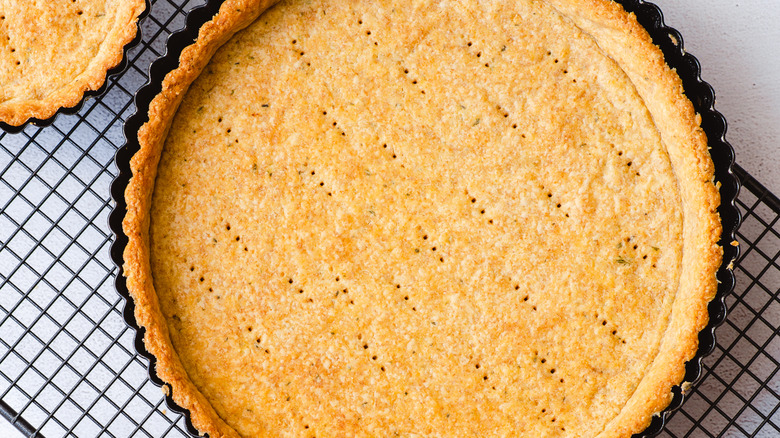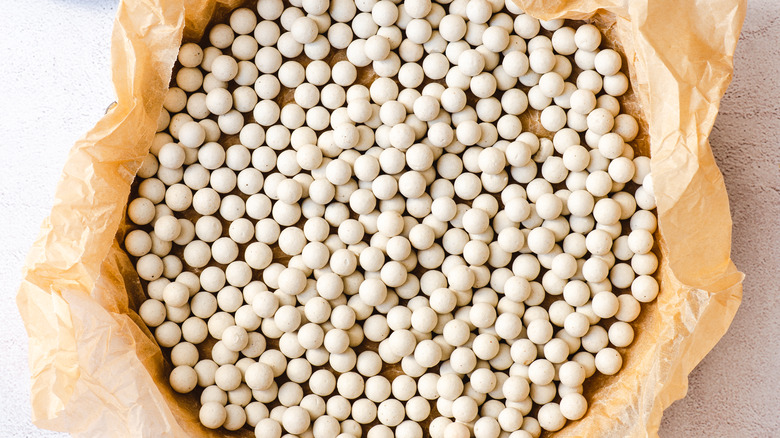Blind Bake Your Pie In The Air-Fryer For A Perfectly Crispy Texture
If you have a fairly large air fryer, it probably takes up a fair amount of counter-top real estate. While some appliances, such as coffee makers, are able to come out with space-saving versions (Keurig's K-Mini and K-slim being prime examples), it's really hard to reduce your air fryer's footprint without reducing its capacity. Still, if you have an air fryer that's big enough to fit an entire pie inside, you might as well put it to good use by, well, baking a pie.
Okay, not an entire pie. Since the heat in an air fryer comes from the top, if you bake a whole pie the top crust may burn while the bottom stays raw and the filling drips out and gunks up the appliance. If you make something like lemon meringue, key lime, or French silk pie, though, you'll want to blind-bake the pie crust, and air fryers do this job perfectly. The top-down heat, when applied to a thin single-layer crust, gets it crispy in anywhere from 10 to 20 minutes depending on the heat and the size of your air fryer. As a bonus, using your air fryer to make the pie crust will allow you to free up the oven for other uses, or, should pie-making be your only kitchen project for the day, avoid turning it on at all.
You can achieve the same effect with a convection oven, too
What if you don't own an air fryer, though, or the one you do have isn't big enough to fit your pie pan? If you have a convection oven, then essentially what you have is one big air fryer. Some ovens come with or can be retrofitted with air fryer baskets that will concentrate the convection cooking in a smaller area to better mimic the action of a dedicated air fryer. Even if your convection oven lacks this feature, though, the hot air that it circulates will still allow your pie crust to become extra crispy, but it may take a little longer to cook.
Whether you are blind baking your pie crust in an air fryer or a convection oven (or a conventional one, for that matter), you will still want to anchor down the crust with pie weights, dried beans, or even granulated sugar. Skipping this step can be a mistake since a blind-baked pie crust sans weight might get puffy, lumpy, or otherwise asymmetrical. This isn't a major baking tragedy by any means since the pie's flaw will be hidden under its filling, but still, it's an oops that's easily avoided.

